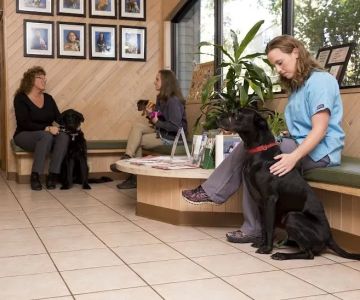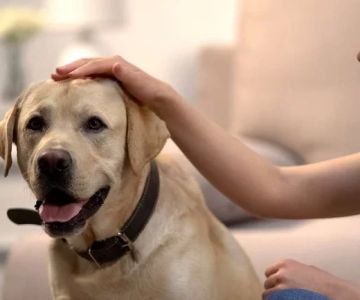- 1 - Understanding Why Dogs Get Anxious in New Environments #understanding-dog-anxiety
- 2 - Techniques to Help Calm Your Dog #calming-techniques
- 3 - The Role of Consistency in Dog Training #consistency-in-training
- 4 - Positive Reinforcement for Calm Behavior #positive-reinforcement
- 5 - Real-Life Success Stories: Training Dogs for Stress-Free Travel #real-life-stories
1. Understanding Why Dogs Get Anxious in New Environments
Dogs, like people, can experience anxiety when placed in unfamiliar situations. Whether it’s a new home, a busy park, or a long trip, the unknown can trigger stress and fear in dogs. Understanding the causes of this anxiety is the first step in helping your dog adjust to new environments.
Dogs have highly sensitive senses, and unfamiliar sounds, smells, and sights can overwhelm them. Some dogs may have had negative past experiences, while others simply struggle with change. Recognizing these triggers allows you to address the underlying cause of your dog's anxiety and tailor your training approach accordingly.
2. Techniques to Help Calm Your Dog
Training your dog to stay calm in new environments requires patience, consistency, and the right techniques. Here are some of the most effective strategies:
1. Gradual Exposure: Introduce your dog to new environments slowly. Start by taking them to less crowded places and gradually increase the level of stimulation. For example, begin with quiet parks and work your way up to busier areas.
2. Familiar Items: Bringing familiar items, like their favorite blanket or toy, can provide comfort and reduce anxiety. The smell of home can help your dog feel secure in unfamiliar places.
3. Calm Energy: Dogs are highly attuned to their owners' emotions. If you remain calm and composed, your dog is more likely to feel reassured. Avoid showing signs of stress, as this can inadvertently heighten your dog's anxiety.
3. The Role of Consistency in Dog Training
Consistency is key when it comes to dog training. To help your dog remain calm in new environments, it's essential to establish routines and reinforce positive behaviors consistently. Regular practice in a variety of settings helps your dog learn to generalize calm behavior, making it easier for them to handle different situations.
For example, if your dog remains calm in the car during trips, take them on shorter drives before embarking on longer journeys. By repeating these experiences, your dog will gradually associate travel with calmness and security.
4. Positive Reinforcement for Calm Behavior
Positive reinforcement is one of the most effective methods for training dogs. Rewarding calm behavior in new environments encourages your dog to repeat that behavior. Whether it’s through treats, praise, or playtime, reinforcing calmness helps your dog understand that staying relaxed is a desirable response.
For instance, when your dog is calm at a park or in a new location, immediately reward them with a treat or praise. Over time, they will learn that calm behavior results in positive outcomes.
Consistency is important here as well. Always reward calmness to reinforce the behavior, and make sure your dog associates these rewards with the calm state of mind you want to encourage.
5. Real-Life Success Stories: Training Dogs for Stress-Free Travel
Many dog owners have successfully trained their dogs to remain calm in new environments with patience and dedication. Take the story of Sarah and her Golden Retriever, Max, for example. Max was initially terrified of car rides and would become agitated when traveling to new places. With consistent exposure to short car trips, accompanied by his favorite blanket and treats, Max learned to associate travel with relaxation and fun.
Another example comes from Michael, who used gradual exposure to introduce his dog, Luna, to crowded public spaces. By starting with quiet areas and slowly moving to more stimulating environments, Luna gradually became more comfortable and confident, overcoming her initial fear of crowds.
These success stories are a testament to the power of consistent training and positive reinforcement in helping dogs adapt to new environments with ease.
If you’re struggling with your dog’s anxiety, don’t hesitate to consult a professional trainer for personalized advice and additional strategies.
Training your dog to remain calm in new environments is a rewarding process that takes time and patience. With the right techniques, consistency, and positive reinforcement, your dog will become more adaptable and relaxed, no matter where they are. Ready to start your dog’s journey to stress-free travel? Visit Hidden Brook Veterinary for more resources and expert advice.









